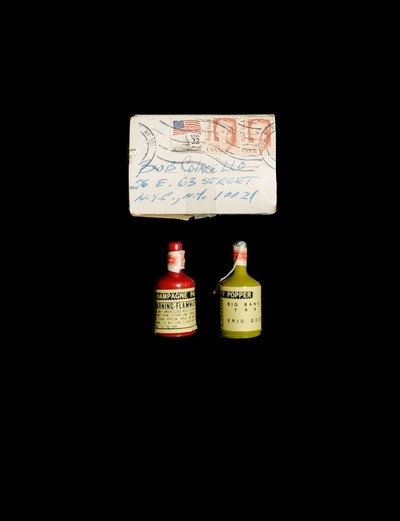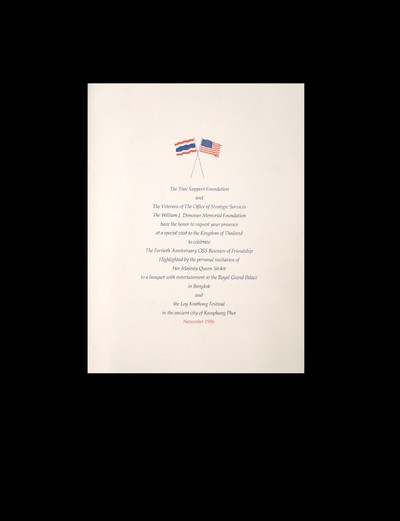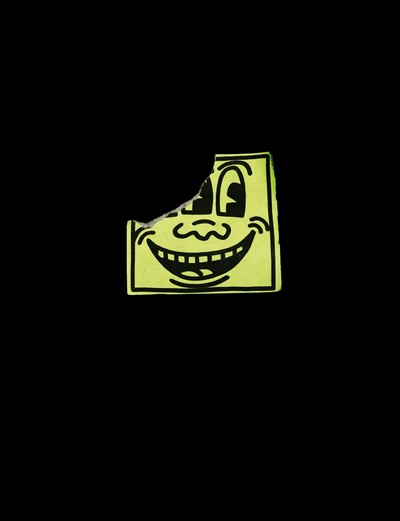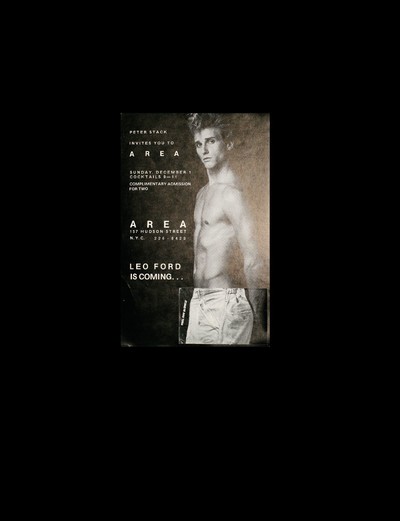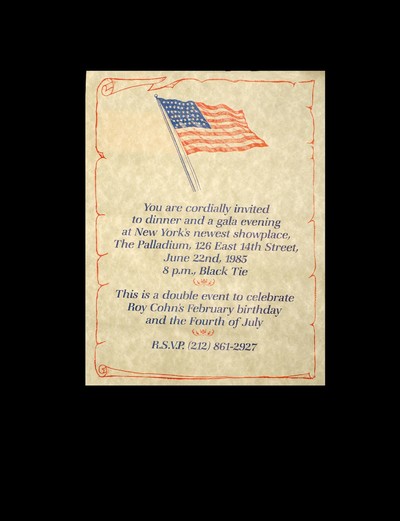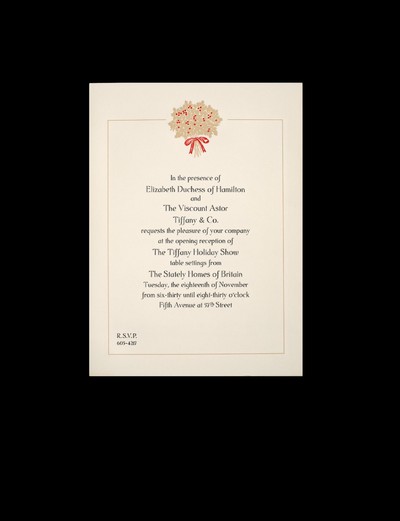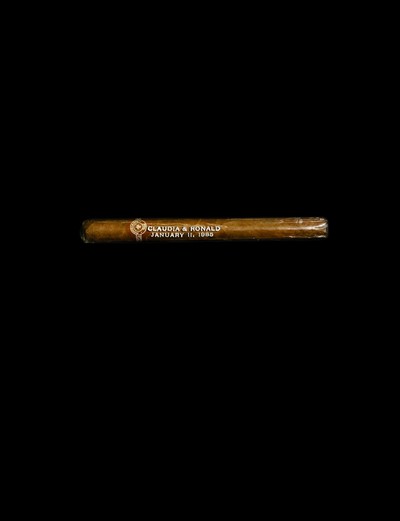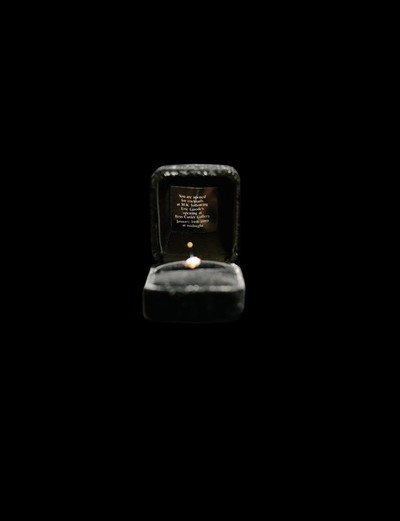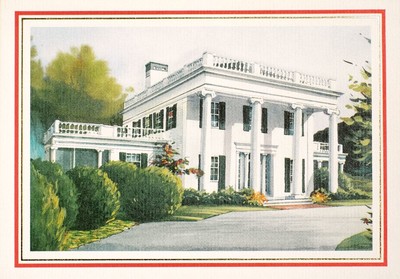Bob Colacello remembers America’s Second Gilded Age.
By Jonathan Wingfield
Bob Colacello remembers America’s Second Gilded Age.
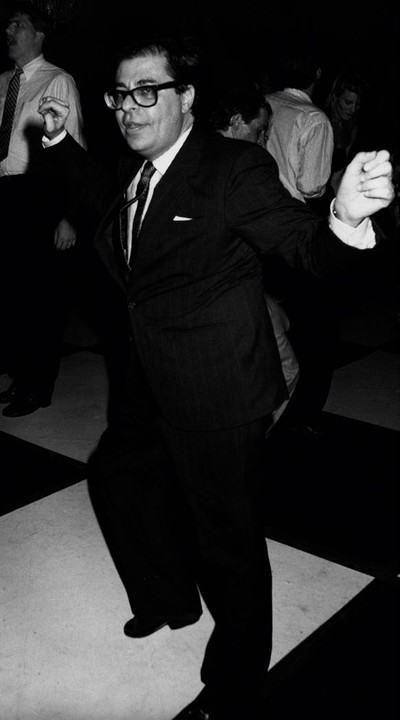
Long before ‘well-connected’ meant a couple of hundred thousand Facebook followers, there was Mr Bob Colacello. As the man who ran Andy Warhol’s Interview magazine from 1971 to 1983, and has since earned a living as Vanity Fair’s go-to society scribe, Bob has quite literally seen it all. Everything. Or at least everything worth seeing. And everyone worth meeting.
For decades, his professional and social lives have merged into one exhilarating, celebrity-packed mission to penetrate the heart of what makes art, power, fame, fashion, politics, pop and high society tick. Bob’s world has been one inhabited by Factory freaks, downtown artists, industrialist billionaires, European royalty, heads of state, ladies that lunch, and those still disco-dancing at dawn.
His writing is as astute as it is arch, as insightful as it can be ironic, as compelling as it’s often comedic (for the uninitiated, go and buy Holy Terror: Andy Warhol Close Up, Colacello’s newly re-released, exquisite portrayal of his former employer). His photographs have always captured the spirit, scandal and smells of life beyond the velvet rope.
Who better then than Bob to ask about the inner sanctum of that most ostentatious of American decades, the 1980s? The Reagans? Bob was friends with them. Hell, he’s currently completing his second encyclopaedic biography about them. The Trumps? Bob wrote what he calls his ‘quintessential 1980s story’ when profiling Ivana just months after she divorced Donald. The Hamptons? Bob’s wined, dined and reclined in every Shingle-style vacation palace stuffed with Serious Art and silly money.
Not only did Bob graciously invite us over for a chat in his professional HQ, a converted Gulfstream hangar deep in East Hampton (where else?), he also dug out and dusted off his personal collection of party invitations, untouched since the decade of fame, fortune and the Forbes 400. Shoulder pads optional.
Jonathan Wingfield: Was there a defining moment – a trigger – that ushered in 1980s America?
Bob Colacello: Well, I think to understand the 1980s, you’ve got to look at the 1970s a little bit. The 1970s were the time when the sexual and cultural revolution of the 1960s really took effect. In the first half of the decade, you had the Vietnam War going on, you had Nixon and Watergate. It was very heavy, and everyone was still a bit hippy and protesting. Then, once Nixon was gone, and Vietnam was over, disco music came in, which was black music that you could only find in gay bars at first. So there was just this explosion. My generation – the baby boomers – was the first really affluent and college-educated generation across the board in America; it was the first generation where women were college educated too. And everyone just decided, or felt like, dancing and partying! Then you had cocaine coming in, and you had all these elements coming together, culminating in Studio 54, which opened in 1977 and ran until 1980 when the owners Steve Rubell and Ian Schrager went to jail.
Politics at the latter end of the decade was hardly a big party though, was it?
You had Jimmy Carter as President and he was kind of a downer; he was a ‘blame America for everything’ kind of President, and he got all messed up with the Iran hostage crisis. It just turned people off politics generally. He wasn’t a bad man and he was certainly intelligent, but his wasn’t a successful administration. Most people were very disillusioned, which made possible the election of this conservative Republican from Hollywood called Ronald Reagan. And suddenly when the Reagans came to Washington, it was a great big change. They were the most glamorous and most social first couple since the Kennedys.
‘In the 1980s, Reagan was like this reassuring grandfather who was going to stand up to the Russians and make America great again.’
But the Reagans were so much older than the Kennedys.
Of course, but he was like this reassuring grandfather who was going to stand up to the Russians and make America great again. And she cared about clothes, she cared about parties, she cared about Brooke Astor and David Rockefeller coming to the White House. She would come to New York all the time to go to the ballet and to go to Oscar de la Renta’s and Bill Blass’ fashion shows. And suddenly it was OK to be rich – for kids to want to get MBAs instead of MFAs.
In the 1960s, people identified the so-called counterculture. In the 1970s that culture spiralled out of control then splintered. Was it well and truly dead by the 1980s?
Counterculture was definitely dead in the 1980s, or it became slick and commercialised like at clubs such as The Palladium and Area. The 1980s were the golden years of counter-counter-culture. Reagan, when he was governor of California, was putting down the Berkeley riots, he made fun of hippies, saying, ‘I can’t tell if it’s a girl or a boy or their dog!’ He would say things like that on TV!
You’ve touched on the excess of the 1970s; what would you say the principle excess of the 1980s was?
People showing off their money too much. Forbes magazine started publishing their list of the 400 richest people in 1982, which changed a lot of things. Suddenly you became aware that somebody who was just a nice art collector who had a big apartment and threw parties, was worth two billion. And everyone had a label of how much they were worth, and I think that drove the really rich together more. They sort of circled their wagons because I think they felt exposed. Yet at the same time, it allowed them to brag, because there it was, it was public, and Forbes magazine was somehow legitimising it.
What were people spending all their money on in the 1980s?
Well, couture came back in a big way. You’d go to the collections in Paris, and all the society ladies from New York and all over Europe were there. The Arabs in those days used to be seated in the back row, and now they’re right in the front.
It became OK to have a Rolls-Royce or a Bentley, especially in Palm Beach, Palm Springs and LA. Travelling: Concorde was really big. You’d take Concorde to Paris for a party and come back two days later. The clubs: Area changed its entire decor once a month to a different theme. Parties: people just entertained in the most lavish way, even charity balls became extremely lavish. Then in the 1990s when the Clintons came in, suddenly it was like, hide your money. Don’t show off! But in reality, it was Clinton who made it possible for Wall Street to make even more money by doing away with the Glass-Steagall Act, which was supported by many Republicans as well. There had been, since the Depression, the separation of investment banks and commercial banks. After 1999, that didn’t apply, so that’s when the banks got so big.
What was the most decadent party you remember from the 1980s?
I think one of the parties that brought it all to an end was when Saul Steinberg had his 50th birthday party at the triplex at 740 Park Avenue, formerly of John D Rockefeller, Jr. They had tableaux vivants of some of Steinberg’s Renaissance paintings and some of these paintings were of nudes, and people were grabbing the living nudes which got a lot of bad press and cost several million dollars. Meanwhile, there was this parallel decadence at downtown clubs like Area where cocaine was rampant – maybe even more than in the 1970s. It all went too far. And then the first cases of AIDS started appearing in the early 1980s. It wasn’t even named until 1984, and Reagan didn’t really become aware or take cognisance of this epidemic until 1986 or 1987.
How immediately did that have an impact on nightlife in the 1980s?
Well people started getting nervous. Especially about going to these clubs that were all about sex. But I think in the 1970s and early 1980s, there was still this feeling in the air that you went out, after dinner especially, with the idea that you might meet someone and it would be OK. Diane von Furstenberg had a great line, that there was this window of opportunity between the invention of the pill and the onset of AIDS. But I think by the mid-1980s, AIDS really put a dampener on that more promiscuous lifestyle. People did become very nervous, and didn’t really know what it was, or how you got it – it got a little ugly. I mean, lots of friends started dying; you were going to more funerals than weddings. That was not fun. The fashion world, and to a lesser extent the art world, were really being decimated by AIDS.
Was Reagan’s ignorance about AIDS mirrored in broader society circles?
I remember my friend Jerry Zipkin saying that one of the grand ladies in Palm Beach wanted to give an AIDS benefit, and nobody came, because they all said it was a self-inflicted disease. And he was like, ‘Well, what is alcoholism? Isn’t that self-inflicted? That’s all they do in Palm Beach, they get drunk!’
The press were calling the 1980s ‘The New Gilded Age’. With hindsight, how accurate do you think that label was?
Well, they were obviously referring back to the 1880s and 1890s when you had the original big-money industrialists like Rockefeller, Harriman, Carnegie and Mellon making the equivalent of billions and building huge houses on Fifth Avenue and Newport, Rhode Island. It was the first time that the American upper class really went wild, and really showed off.
You know, in Europe when people had money they always built big houses, but in America if you look at American resorts that started before the 1880s, like The Hamptons, it was always clapboard houses – nobody built a palace. But in the 1880s and 1890s, they built palaces in New York and in all the big cities. They also built the great museums and the great libraries. The charity balls started in those decades. And Barneys New York. So when you think about what that era represented, the 1980s parallels were inevitable.
How did you find yourself in the thick of all this high society?
I started working with Andy Warhol at Interview magazine when I was 22 years old. I never had to social climb because I sort of landed on Mount Olympus in Andy’s helicopter. Andy always liked to have a little entourage with him, and if you worked a little late, he’d say, ‘Oh gee, want to go to a party with me?’ And it would be Jackie O’s Christmas party, or dinner with Truman Capote. Or if we were in Paris, it would be the Rothschilds or the Schlumbergers, or Jacqueline de Ribes. And if we were in Italy, it would be the Agnellis. So I was just this kid tagging along.
This use of the word ‘society’ is so commonplace, yet it’s rarely defined. How would you define it?
I’d always had the idea that there was ‘society’, and then there was the corporate world, and then there was politics. Then the art world was some completely separate avant-garde coven. But then, I quickly realised that the art world is where all these successful people come together because the rich people are the ones buying the art. And that this thing called ‘society’ is really all one big group of the most successful people in the world – in Europe, maybe it’s more those people born into it, whilst in America it’s a little more of a meritocracy. At Interview, we just tried to cover the whole thing and mix it all up.
Whereabouts in New York were you living at the time?
I was living at 26 East 63rd Street, which was an old building called The Leonori. The restaurant Quo Vadis was on the ground floor, which is where Andy, his manager Fred Hughes and I used to have lunch and dinner a lot. It closed around 1985 when Le Cirque took over. The ‘in place’ to eat was at the bar at the front, and you would see Jackie with her sister Lee Radziwill, Diana Vreeland was a regular there, and Doris Duke. It was more the older society.
‘We’d go to the White House all the time, and Andy loved it – even though he was a Democrat. It was this very exciting and glamorous social scene.’
Aren’t 22-year-olds supposed to want to be hanging out with movie stars and rock bands?
I was brought up in a middle class Italian-American family. My grandparents came from Southern Italy in 1900, more or less, as children. My mother’s mother was from Naples, which has always been a royalist stronghold. I remember she happened to be visiting us when the King of Iraq was assassinated in 1956 or 1958, and when I came home from school, she was crying over the newspaper. I said, ‘What happened? What’s wrong?’ She said, ‘Oh, they killed the King of Iraq, and he was only 18! Robert, when you grow up, there aren’t going to be any kings or queens in the world; they’re all going to be gone.’
As a student, I went to Georgetown School of Foreign Service and then I went to Columbia University School of Film – so I’ve always been a little bit schizophrenic. I’m not a groupie follower of movie stars or anything, but I’m definitely a groupie for heads of state, royalty, world politicians…
…which means you really hit the jackpot when you got to know the Reagans. How did this come about?
I had become friendly with Jerry Zipkin, who was Nancy Reagan’s best friend in New York. His friendship with Andy had gone back to the 1950s. He was a gay gentleman, a man-about-town who, once the Reagans came to power, was running New York society. I was sort of a protégé of his; he just always liked me from day one. We’d done an interview for the magazine before the election with Ron Reagan Jr and his girlfriend, who he then married, Doria Reagan. She was looking for a job, so I hired her as my secretary at Interview. We would go to the White House all the time, and Andy loved it; even though he was a Democrat, he loved the idea of going to the White House. We’d been there under Carter and Ford. It was just very exciting and glamorous, and even Democrats and Liberals were caught up in what the Reagans brought to Washington and New York, which was this huge social scene where people were dressing up and constantly giving dinner parties and cocktail parties.
How often were you going out?
Oh, pretty much every night, and then I would collapse and need a couple of nights off to recuperate.
What did your average night out in the 1980s entail?
I was either working down at Interview, or later at Vanity Fair. I probably wasn’t getting home till close to 7pm, so I’d quickly take a shower and maybe shave again, all the while drinking a Scotch on the rocks. I would rush to a cocktail party by 7:30, and it would be over by 8pm. And then usually there was a dinner party every night at different apartments on Fifth Avenue and Park Avenue, in many cases black tie or at least a dark suit.
Then from the dinner party – I wouldn’t change or anything – I would usually go directly downtown to either Palladium or Area, and then after those clubs closed sometimes I’d go to Crisco Disco, [laughs] or afterhours places. And it’s so depressing to get out of those clubs with the sun up! At Crisco Disco, you had to be frisked for guns to get in, which sounds worse than it was. I guess I always liked the idea of being a guy who could cross worlds.
‘I’d go to afterhours places like Crisco Disco where you had to be frisked for guns to get in. It was so depressing leaving there with the sun coming up!’
How did you possibly justify the late nights? By reminding yourself that your professional and social activities blurred into one?
Well, my life wasn’t just going to parties but, as Nancy Reagan always said, you can get a lot done at a party. You can initiate, like in my case, I could ask, ‘Can we do a story on you?’ Or, ‘Can we photograph your house?’ Or, ‘I’m doing a story on Gloria von Thurn und Taxis, can I call you tomorrow for a quote?’ It’s so much easier than calling people cold. I think a lot of business deals and a lot of political agreements start at dinners.
Weren’t society figures out on the town suspicious that anything they’d say to you might end up in print?
Well, I made a point of never leaking anything to a gossip column. It would make me too nervous to do that. Also, I was keeping a diary; I thought down the road I might write about this. Like I am writing my second book about the Reagans right now. Why should I waste it on some gossip item? Having worked for a famous person for 30 years I saw the press from the other side, and I was left with a bad taste in my mouth by a lot of journalists. After Watergate, they’d interview a fashion designer or an artist, and act like they were going to be the new Carl Bernstein. It was ridiculous!
Weren’t politicians wary of your association with Warhol, who was nonetheless a pretty subversive figure?
Quite honestly, announcing that I was a Republican helped a lot. When I first started working with Andy, we started going to Nan and Tommy Kempner’s home. Tommy Kempner was pretty conservative. So was Bill Buckley, so was Freddie Eberstadt.
The women were always receptive to Andy and his boys, even to the drag queens. I mean, Nan Kempner would give her used couture to Candy Darling. But these men, most of whom worked in banking and stock brokerage, were like, ‘Who is this Andy Warhol with the wig? And why did my wife invite him to dinner with this young guy who’s probably his boyfriend?’ Which I was not. But as soon as I told them I’d been to Georgetown and Columbia, that right away would make everybody a little more comfortable. Then I would say something like, ‘I don’t think Nixon is that bad’ – this is during Watergate! – and they would really start to open up. I’d end up spending all evening just asking them about politics and the economy, and they would love to hold forth on what they thought was happening. And so it all worked out.
Conversely, how did your being a Republican wash with Warhol?
At first, Andy was like, ‘How can you be a Republican? I mean, didn’t FDR save your family from the Depression?’ I was like, ‘No, they wouldn’t go on welfare, Andy. They didn’t like FDR, they hated Eleanor Roosevelt. What can I tell you?’ But little by little, he’d be like, ‘Oh, Bob’s a Republican, by the way,’ because he saw that it was useful. To be honest, I liked the conflict. I still do. Probably if I lived in the heart of Baptist Texas, I’d be a Democrat.
Out of all the people you spent time with in the 1980s, who most personified the traits of the times?
That’s got to be the Trumps. I think the quintessential 1980s story I wrote was my Ivana Trump cover story for Vanity Fair. She had just divorced Donald, and she’d written her first novel – there were only two – called For Love Alone, which was loosely based on her and Donald’s marriage. When the characters get married in the book, they go to Paris for their honeymoon, and as they board the plane to return, they’re handed a Fed-Ex package with all the publicity about their wedding. The Ivana character is saying, ‘Oh, this is an invasion of privacy,’ and he’s saying, ‘Well, get used to it, honey. I’m a big deal, and that’s the way it is in America – it’s not like Europe. They want to know every last detail.’ And they start going through all this publicity together with blankets over their laps, and they get so excited, they start playing with each other under the blankets! And I thought, this is just so 1980s. It was an over-the-top, show-off decade, and to me the Trumps were the ultimate emblem of the times.
A girl could come from Prague, meet the son of a real-estate developer who was mainly known for building apartment blocks in Brooklyn and Queens, and the two of them could become the golden couple of the 1980s. I mean, they were invited everywhere. Estée Lauder loved Ivana. Pat Buckley had lunches for Ivana. They bought The Plaza Hotel. All the charity balls were at their hotel, which they made way too gold. [Laughs] I remember someone describing their apartment in the Trump Tower as a marble club sandwich, because they had so many layers of different coloured marble.
‘This African-American hip-hop kid ripped of her gold chain. She got so mad, she ripped off his! It turned out his was 24-carat gold, hers was only 14.’
Did you actually like Ivana Trump?
I did! It’s hard not to like Ivana, because she wears her heart on her sleeve, and she’s one of those people who’s very funny, sometimes without realising how funny she is. Written in all her PR material, she has ‘Ivana Trump – International Businesswoman. Fluent in five languages.’
Was the tone of the piece that you wrote about her ironic?
It was very ironic. There was this quote in the story referring to the fact that Ivana had recently become the spokesperson for Cristal champagne. One society insider commented, ‘I guess this means we’ll all be switching to Krug.’ Ivana accused me of writing a hatchet job, but it wasn’t. It was very funny, but I try not to be mean to people. Yes, I can be ironic, but I don’t like to be judgemental because I think, ‘Who am I, or who is anyone in the press to come down on people because they say silly things, or because they take drugs, or marry the wrong person?’ As if we’ve had these wonderfully pure lives.
Everyone constantly talks about New York in terms of gentrification and the evolution of the city. How did 1980s New York compare to now?
New York today versus New York in the 1980s, for one thing, is a lot safer. Before Giuliani, who became Mayor in 1994, you couldn’t go above 86th Street on the West Side. You would never go to Brooklyn or Harlem. There was a famous story of a woman coming out of the Colony Club on Park Avenue and 62nd Street and this African-American hip-hop kid comes by. This is when big old chains were really in: he ripped off her gold chain that she had around her neck, and she got so mad, she ripped off his! And it turned out his was 24-carat gold, and hers was typical WASP-style 14 carat, it wasn’t even 20 carat! [Laughs]
Did you ever find yourself personally in danger?
Yeah, I was mugged twice, and I had my car stolen on Third Avenue and 70th Street in the 1980s. The police called me and said that my Audi had been stripped of everything – tyres, seats, everything – and it had been pushed from this park under the West Side Highway that is elevated, into a ravine where it was lying on top of 20 other cars.
These days, of course, you can go almost anywhere, because every place has been gentrified. The downside of that is kids can’t afford to live anywhere. And when young people can’t come to New York out of college, or even out of high school – trying to be actors, trying to be models, trying to be artists, bankers, or whatever – the city starts losing some of its energy. And in the long term, that’s not going to be healthy.
Were the 1980s the last golden era of New York?
Somehow I’m a big believer in New York. I think it will always thrive and reinvent itself. That said, 9/11 almost put an end to us. That was a party pooper, to say the least. And I think today’s social life is coloured by an underlying anxiety for your personal safety – which started with 9/11 – and fear of another major terrorist attack, including a nuclear bomb or a dirty bomb. We know we are the number-one target because we’re Wall Street, because we’re a Jewish city, because we’re the financial capital of the West. I think Washington and New York are where the extreme Islamic radicals are still trying to find a way to make a big splash.
What’s the current climate of America’s social scene?
I think Washington is totally dead, because we’ve had two Presidents and First Ladies now who basically don’t really like to entertain, and who only have one state dinner a year. And when the White House isn’t social, nobody wants to outshine the White House, so the embassies don’t entertain either. When you do go to parties these days, a lot of it is transactional; a lot of it is about business; a lot of it is people on the make, people selling things. Which isn’t always a bad thing. What’s going on in the art world – with art becoming a kind of commodity, and prices going through the roof where you have a Cézanne going for $250 million and Warhols going for $110 million – has brought even more action to New York, as the capital of the art world. Today, most of the parties are art connected, or being given by art galleries, or dealers, or collectors, art charities, museums. I think museums are the new discos!
